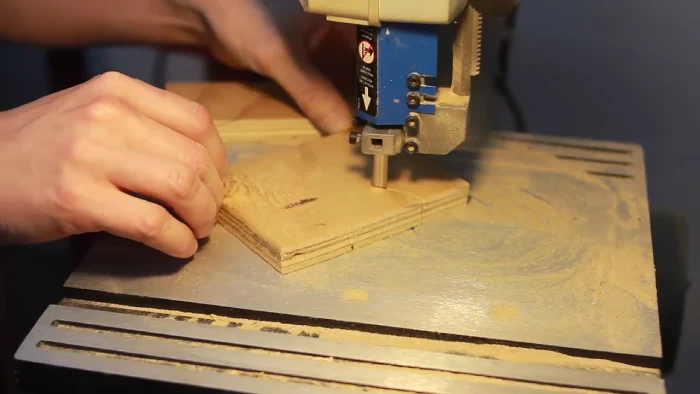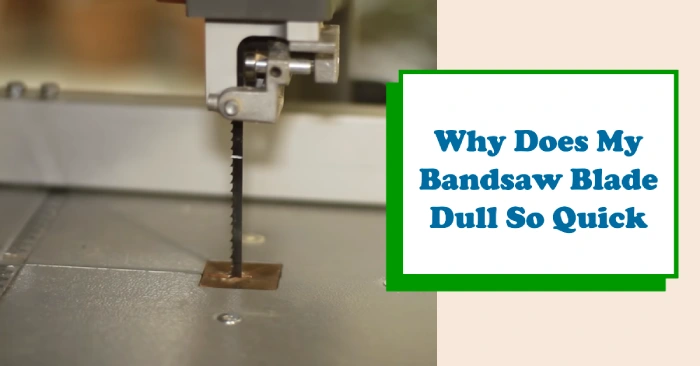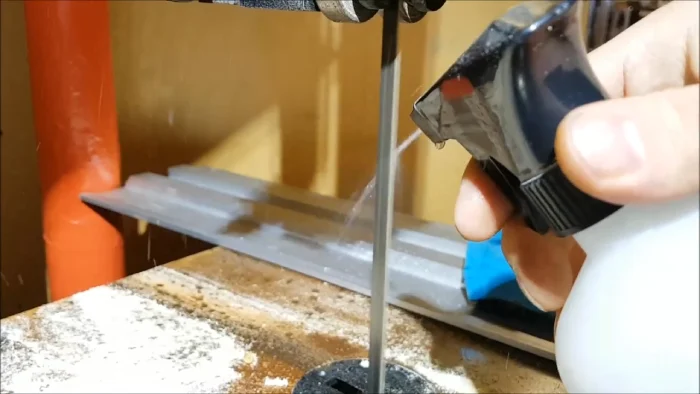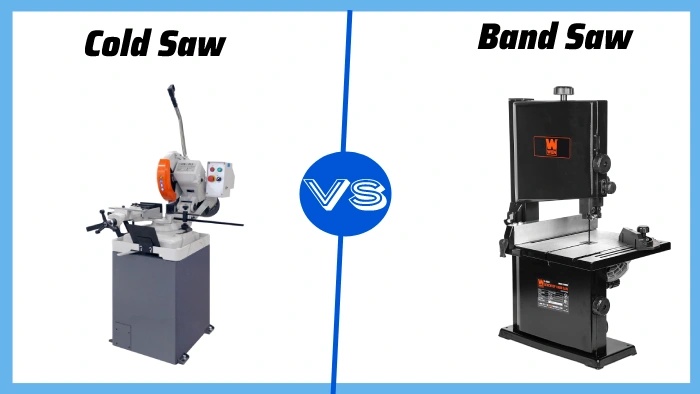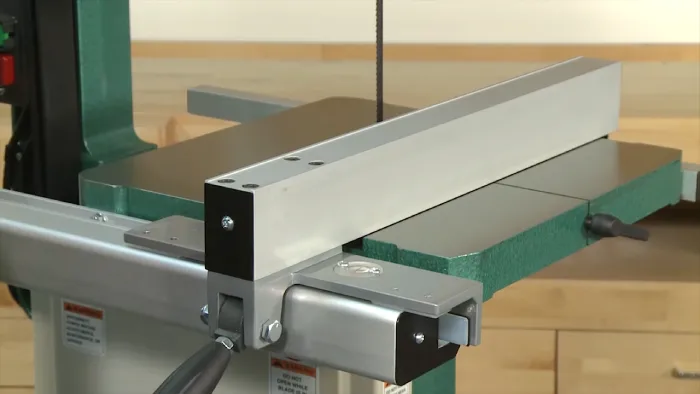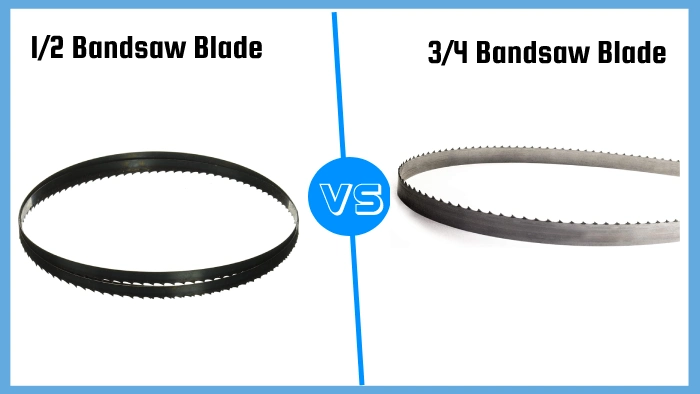Why Does My Bandsaw Blade Keeps Coming Off: 10 Possible Reasons
When a bandsaw blade keeps falling off during woodworking, nothing is more annoying. It not only disrupts the workflow, but it can also have an impact on cuts and even cause some safety hazards. After researching, I have discovered several possible causes of this problem and want to share my findings with you.
One potential culprit is incorrect blade tension. If the tension is too low or too high, the chances of the blade slipping off the wheels during operation greatly increase. Another possible reason is a worn or damaged blade. When the blade is dull, damaged, or has worn-out teeth, it will not stay on the bandsaw wheels for long.
Other factors I have found include using the incorrect blade size, dirty wheels, etc. These issues can all contribute to blade derailment, and you should pay close attention to these details as they impact the bandsaw’s performance.
Several Possible Reasons Why a Bandsaw Blade Keeps Coming Off
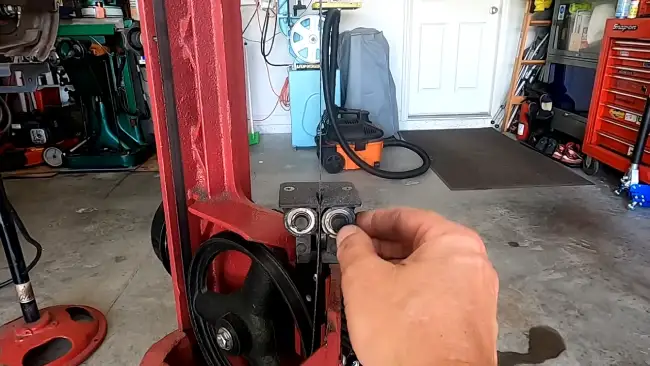
If you’re wondering why your bandsaw blade keeps coming off, I have found several possible reasons you need to check. These include:
- Inadequate blade tension
- Blade tooth tip wear
- Blade quality and weld integrity
- Blade tracking and tooth set
- Poor saw wheel condition
- Improper feed rate
- Improper blade installation
- Gummed-up or dirty bandsaw wheels
- Damaged Wheel bearing
- Material-specific challenges
1. Inadequate Blade Tension
Inadequate blade tension is a common cause of bandsaw blades coming off, compromising the stability and effectiveness of the cutting process.
Proper tension is crucial for maintaining the blade’s position on the wheels during operation. If the tension is too loose, the blade can easily slip off, leading to interrupted cuts and potential damage to the workpiece.
So, I recommend regularly checking the tension, especially after prolonged use, to ensure optimal performance. I suggest investing in a tension meter that can provide precise measurements, but if one isn’t available, a manual assessment can be done using the finger-press method.
2. Blade Tooth Tip Wear
Blade tooth tip wear can contribute to the possibility of a bandsaw blade coming off, impacting both cutting efficiency and stability. Worn tooth tips compromise the blade’s ability to cut effectively, resulting in slower cutting speeds and decreased overall productivity.
Also, when the tooth tips become worn, the blade is more likely to slip off the wheels, causing accidents and damage to the workpiece. So, I advise inspecting the tooth tips regularly, using visual inspection, magnification, or even testing with a fingernail to determine the extent of wear.
3. Blade Quality and Weld Integrity
Inspecting the overall construction and weld integrity of the bandsaw blade is crucial in determining potential reasons for the blade coming off. It goes beyond just sharpness and can impact its performance. A poorly welded blade may have subtle imperfections affecting its operation behavior.
Regularly inspecting the blade can uncover issues that might contribute to a derailment, not just the sharpness. When examining the blade, pay close attention to the welds. Look for any signs of cracking, discoloration, or irregularities. These could indicate a problem with the weld integrity.
Additionally, check for any inconsistencies in the blade’s thickness or width, as these factors can affect its performance. If any issues are found, it’s important to address them promptly to prevent further problems with the blade coming off.
4. Blade Tracking and Tooth Set
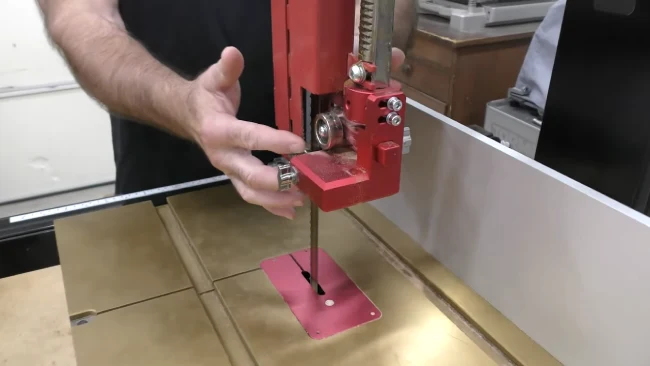
To prevent your bandsaw blade from coming off, ensure the tooth set is properly adjusted during installation to ensure accurate engagement with the material.
Blade tracking is important, but the tooth set also plays a crucial role. The tooth set refers to the specific geometry of the blade’s teeth. If the tooth set isn’t properly set, the blade may not engage the material correctly, causing it to veer off course. This can lead to the blade coming off.
Therefore, paying attention to the tooth set during blade installation is essential. Properly adjusting the tooth set will help ensure the blade stays on track and effectively cuts through the material.
5. Poor Saw Wheel Condition
According to my analysis, when troubleshooting the issue of a bandsaw blade constantly coming off, one important reason to consider is the integrity of the saw wheels.
The condition of the saw wheels plays a pivotal role in preventing blade slippage. Damaged or worn wheels can lead to instability. Regular cleaning and inspection of the saw wheel surface for signs of wear or deformation are recommended.
If the wheels are worn or damaged, they should be replaced. Additionally, loosening the saw blade when the machine isn’t in use can help prevent premature wheel wear.
6. Improper Feed Rate
From my expert viewpoint, the speed at which material is fed into the bandsaw can significantly impact the blade’s behavior. If the feed rate is too aggressive, it can cause the blade to deflect or wander off its intended path. This can contribute to the blade coming off the wheels and causing disruptions in the cutting process.
Finding the right balance between efficiency and a controlled feed rate is essential. Adjusting the feed rate appropriately allows you to maintain a steady and controlled cutting motion, reducing the chances of derailment and ensuring smooth, precise cuts.
7. Improper Blade Installation
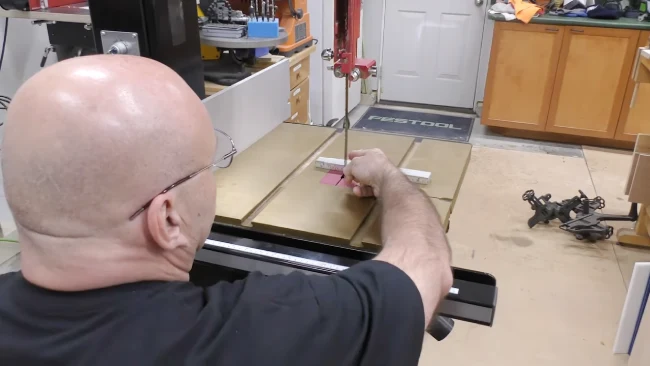
Improper blade installation greatly contributes to blades coming off constantly. It can easily derail when the installation instructions aren’t followed correctly and the blade isn’t properly seated and tensioned.
To avoid this problem, I encourage you to double-check the installation steps and take the time to ensure the blade is securely in place. Always refer to the manufacturer’s recommendations when installing a new blade.
8. Gummed-up or Dirty Bandsaw Wheels
Dirty bandsaw wheels can cause blade slip-offs and derailments, leading to the constant coming off of the bandsaw blade. Over time, sawdust can accumulate on the wheels, creating a slippery surface that reduces the necessary friction to keep the blade securely in place.
To prevent blade slip-offs, regularly clean and inspect the bandsaw wheels. Begin by turning off the bandsaw and unplugging it. Use a soft brush or compressed air to remove sawdust or debris from the wheels. If the buildup is stubborn, gently scrub the wheels with a mild detergent and a cloth.
9. Damaged Wheel Bearing
If your bandsaw blade keeps slipping off, you might have a damaged bearing in the saw wheel, resulting in abnormal shaking during operation. Damaged bearings often go unnoticed but can significantly impact the performance of your bandsaw.
To check for bearing issues, manually rotate the wheel and observe any wobbling or excessive play. If you notice any abnormalities, I suggest promptly replacing the damaged bearings. Neglecting to address this issue can lead to further instability and potential accidents.
10. Material-Specific Challenges
Consider the unique properties and forces exerted if your bandsaw blade is coming off repeatedly due to the material being cut.
Exotic or unusually dense materials can exert different forces on the blade, impacting its trajectory and leading to blade slippage. These materials may require tension and other settings adjustments to ensure proper blade alignment and reduce the risk of the blade coming off.
By understanding the characteristics of the material at hand and making appropriate adjustments, the bandsaw can perform better and be more reliable. Don’t overlook the influence of the material itself when troubleshooting blade slippage issues.
What is the proper tension for a bandsaw blade?
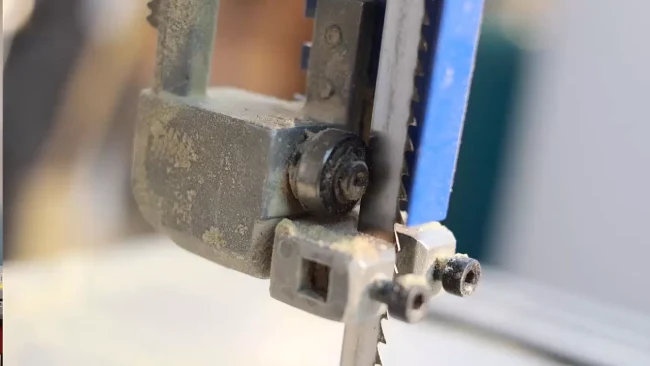
The appropriate PSI tension for a bandsaw blade depends on the blade used. According to my evaluation, a tension of 15,000 to 20,000 psi is recommended for common carbon steel blades. These blades are widely used and require moderate tension to perform effectively.
However, a higher tension of 25,000 psi to 30,000 psi is necessary for bimetal, spring-steel, and carbide-tipped blades. These blades are designed for heavy-duty cutting applications and have increased strength and durability.
Maintaining the proper tension is crucial for the performance and longevity of your bandsaw blade. Insufficient tension can cause the blade to deflect during cutting, resulting in poor cuts and a loss of accuracy.
How do you tighten the tension on the bandsaw blade?
When tightening the tension on your bandsaw blade, locate the tension adjustment knob or lever near the upper wheel of the bandsaw. Ensure the bandsaw is stable and the blade is properly seated on the wheels and guides. This will prevent any unnecessary strain on the blade during the tensioning process.
Once you have located the tension adjustment mechanism, you can proceed to tighten the tension. If your bandsaw has a tension adjustment knob, rotate it clockwise to increase the tension.
Flip it into the ‘tension’ position if it has a tension adjustment lever. As you apply tension, observe the blade closely. You should notice it becoming tauter and straighter.
However, I strongly recommend avoiding over-tightening the blade. Over-tensioning can lead to premature wear and tear on the blade and the bandsaw’s components. It can also cause the blade to break or come off the wheels, resulting in potential damage or injury.
Keep Your Bandsaw Blade Secure: Properly Maintain Tension and Prevent Slippage
If you’re experiencing the issue of your bandsaw blade constantly coming off, I advise you to ensure the blade is properly tensioned. Improper tensioning can lead to the blade slipping off during operation.
Also, ensuring proper blade installation and addressing any worn, damaged, or loose blade guides can go a long way. Following the correct tensioning guidelines and tightening the blade can prevent this frustrating problem.
Aside from that, sticking to quality blades, using the right equipment, and maintaining regular bandsaw maintenance can prevent future problems.

